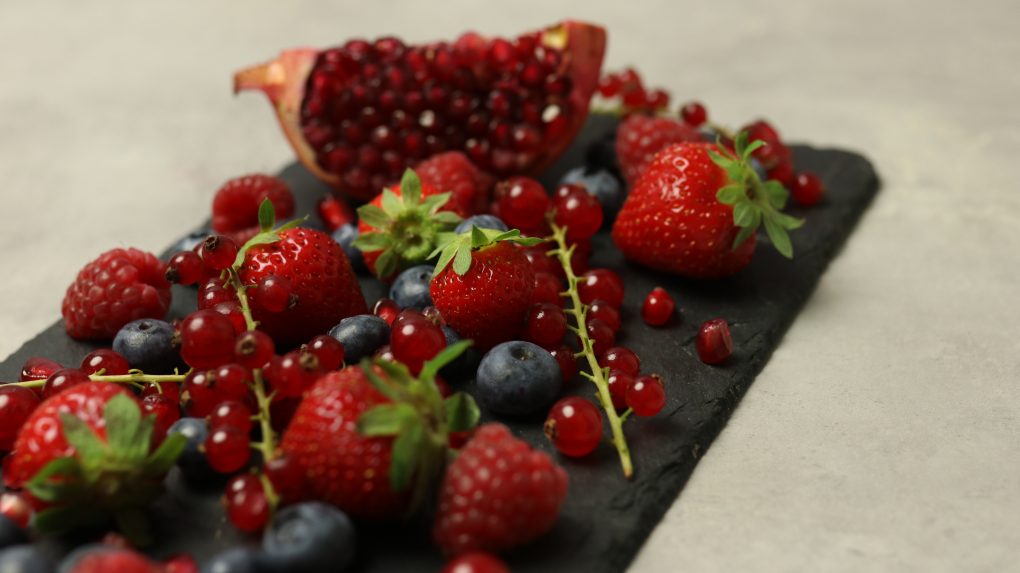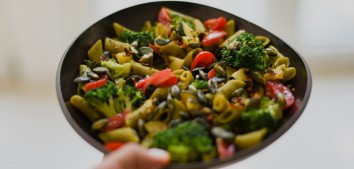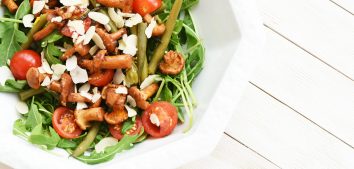
Berries – a Wealth of Vitamins
If you follow the recipes on my blog, you have surely noticed that berries often appear in them (strawberries, raspberries, blueberries, currants, blackberries, blueberries). I use them not only in season (although they are the tastiest then), but also in frozen or freeze-dried form (in the Foods by Ann store you will find e.g. freeze-dried strawberries). I encourage you to consume them as often as possible and I will try to show you they contain a plethora of valuable nutrients 🙂
The Nutritional Value of Berries
Berries are definitely on the very top of the list in terms of the content of compounds with antioxidant properties: polyphenols, some vitamins (e.g. C and E), carotenoids, and phenolic acids. They protect the body against the harmful effects of free radicals. Numerous scientific studies have shown that a diet rich in polyphenols reduces the risk of certain cancers, cardiovascular diseases and type 2 diabetes. High consumption of polyphenols also translates into slower skin aging, better condition of the skin, nails and hair.
What’s more, daily consumption of fruit and vegetables (due to their low energy value) makes it easier to maintain a healthy body weight, which is particularly important in the context of excess weight and obesity prevention.
It is worth mentioning that blueberries are on the list of 10 products recommended in the MIND diet, which aims to improve cognitive functions, and thus the work of our brain! Researchers recommend eating no less than 2 servings of berries per week.
The Importance of Fruit in Your Diet
Now you are probably wondering how many servings of berries you should eat. A serving is about ½ cup of berries. Depending on the type of fruit, there is about 70 grams of fresh fruit per serving
Remember, however, that according to the recommendations of the Polish National Institute of Public Health, which issues official nutritional recommendations for the Polish population, you should eat a minimum of 400 grams of vegetables and fruits a day, most of it being vegetables.
How to Use Berries
Let’s now get to the most important thing: what can you use berries for? They will be perfect as an addition to healthy desserts, cakes, all kinds of oatmeal, millet, sweet groats, as well as smoothies. Don’t forget that it’s worth experimenting and using them in unusual combinations: savory salads or a refreshing cold soup.
Below I have made a list with a few recipes from my blog which will certainly encourage you to stock up on these extremely valuable fruits
- Beetroot and Raspberry Cold Soup
- Chocolate & Coconut Waffles with Strawberries
- Chocolate Oatmeal with Strawberries
- Porridge with Forest Fruits
I hope I’ve encouraged you to try different types of berries more often. If you love them as much as I do, it probably won’t be difficult! 🙂
Bibliography:
- Kaluźniak A, Krzymińska-Siemaszko R, Wieczorowska-Tobis K. Wpływ diety na zachowanie sprawności funkcji poznaw-czych przez osoby starsze—Możliwości zdrowotne wynikające ze stosowania diety MIND. Geriatria 2018; 12:110-116
- NCEŻ NIZP PZH – PIB. Wiem, że dobrze jem – Talerz Zdrowego Żywienia w praktyce. 2021
- Olędzki R. Potencjał antyoksydacyjny owoców i warzyw oraz jego wpływ na zdrowie człowieka. Nauki Inżynierskie i Technologie. 2012; 1(4): 44-54
- Piotrowska A, Góralczyk M, Żebrowska-Krasuska M. Owoce jagodowe i ich przetwory jako źródła przeciwutleniaczy. Postępy Techniki Przetwórstwa Spożywczego 2013; 2:98-103
- Wang L, Yuan S, Rui W, Deding S, Mingfeng T, Yudong L, Zhengguo L. Antioxidant Activity and Healthy Benefits of Natural Pigments in Fruits: A Review. Int J Mol Sci 2021; 22(9): 4945












Comments No Comments
Join the discussion…